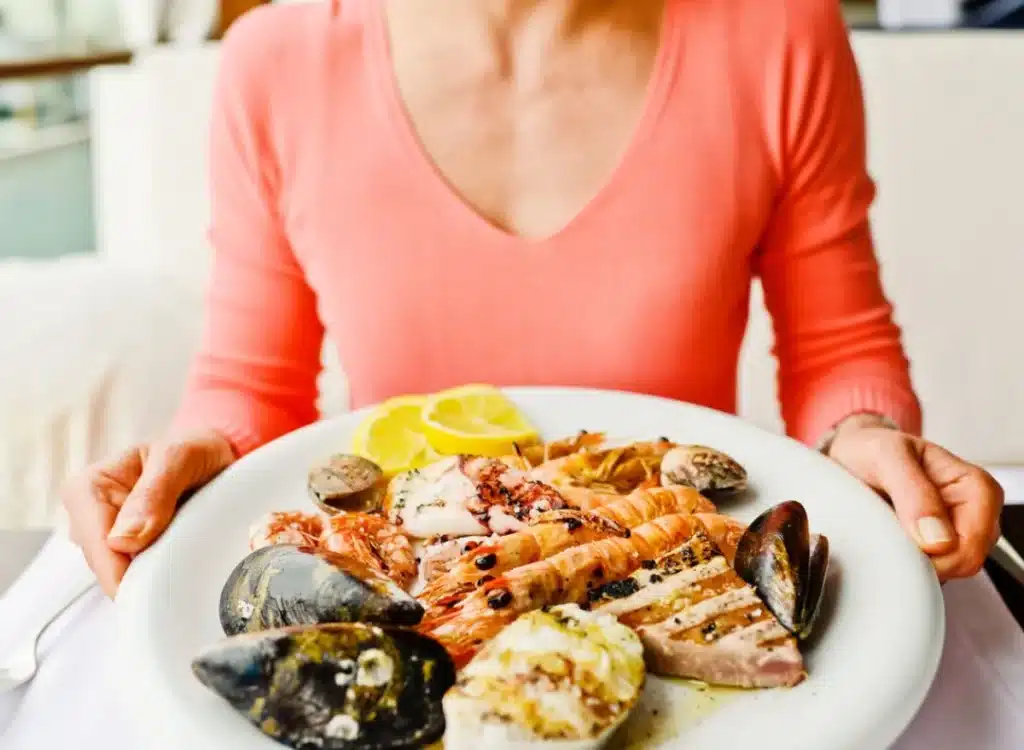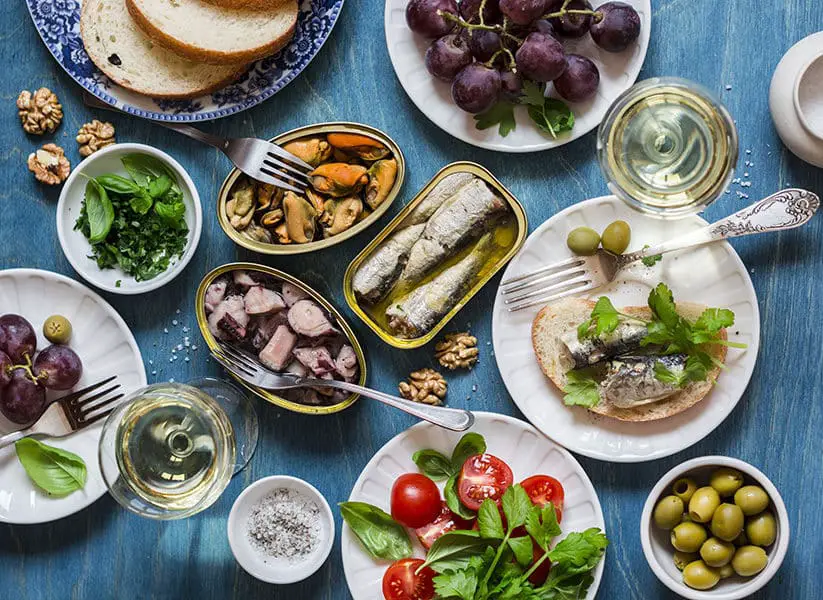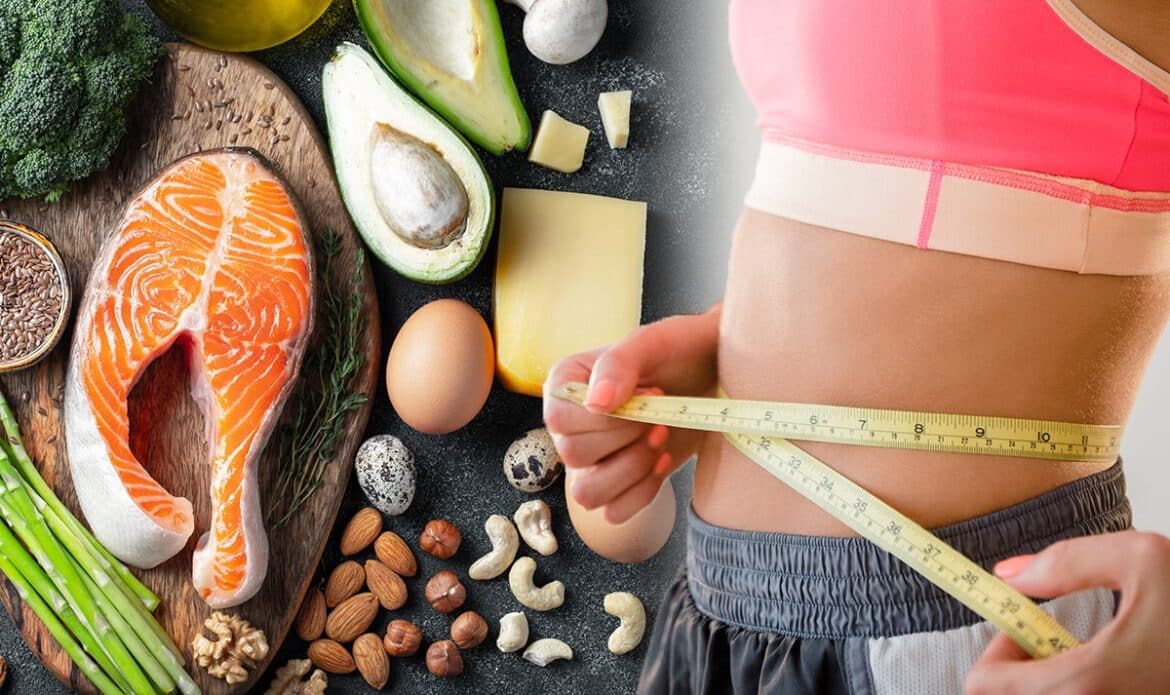Introduction
Is Seafood Boil Good For Weight Loss: Seafood is a nutritional powerhouse. It’s rich in lean protein, which can help you feel full and satisfied for longer periods, reducing the temptation to snack on unhealthy options between meals. Seafood is low in saturated fats and calories compared to many other protein sources, making it an excellent choice for those aiming to shed pounds. The spices and seasonings often used in seafood boils, such as garlic, paprika, and cayenne pepper, can provide an added boost to your metabolism.
These ingredients are known to have thermogenic properties, which means they can increase the body’s calorie-burning rate, potentially aiding weight loss efforts. The communal nature of a seafood boil encourages mindful eating. Sharing this delicious meal with friends and family fosters a relaxed atmosphere where you can savor each bite and engage in meaningful conversation. This slower, more deliberate pace of dining can prevent overeating and promote a greater awareness of your body’s hunger and fullness cues.
In this introductory exploration of whether seafood boils are good for weight loss, we will delve deeper into the nutritional aspects of seafood, the potential benefits of the spices and seasonings used, and the psychological elements that make this dining experience unique. By the end of this discussion, you’ll have a well-rounded understanding of how to incorporate this beloved dish into a balanced and effective weight loss plan. So, let’s dive into the enticing world of seafood boils and uncover the secrets they hold for those pursuing a healthier lifestyle.

Is seafood boil good for a diet?
Protein, Vitamins, Minerals
Additionally, it offers a range of vitamins and minerals, such as vitamin B12, zinc, iodine, and selenium, which contribute to overall health and well-being. The nutrient-packed profile of seafood can make a compelling case for the healthiness of a seafood boil.
Lean Protein Source:Seafood, a primary component of seafood boils, is an excellent source of lean protein. It provides the body with essential amino acids necessary for muscle repair and overall growth. Consuming protein-rich foods can also help you feel full and satisfied, reducing the urge to overeat.
Omega-3 Fatty Acids:Many seafood varieties, such as salmon and mackerel, are rich in omega-3 fatty acids. These heart-healthy fats are known for their anti-inflammatory properties and can contribute to improved cardiovascular health. Omega-3s also play a vital role in brain function.
Essential Vitamins and Minerals:Seafood is packed with essential vitamins and minerals, including vitamin D, vitamin B12, iodine, and selenium. These nutrients support various bodily functions, including bone health, immune system function, and thyroid regulation.
Low in Saturated Fat:Seafood is generally low in saturated fat compared to other protein sources like red meat. A diet low in saturated fat can help reduce the risk of heart disease and maintain a healthy cholesterol profile.
Can I lose weight on a seafood diet?
Absolutely. The good news about fish, shellfish, and crustaceans is that they’re low in calories but high in those healthy fats and lean proteins. Protein-rich foods can keep you feeling full and help regulate blood sugar — meaning you won’t be craving extra calories.
Low in Calories and Fat:Seafood is generally lower in calories and saturated fat compared to red meat and poultry. This can make it a favorable choice for those looking to reduce their calorie intake and maintain a healthier fat profile.
High Protein Content:Seafood is an excellent source of lean protein. Protein helps you feel full and satisfied, reducing the likelihood of overeating or snacking between meals. This can contribute to weight loss by curbing your appetite.
Rich in Omega-3 Fatty Acids:Many seafood varieties, like salmon, trout, and mackerel, are rich in omega-3 fatty acids. These healthy fats may assist in weight management by promoting a feeling of fullness, reducing inflammation, and enhancing the body’s ability to burn calories.
Nutrient Density:Seafood is packed with essential nutrients like vitamins (e.g., vitamin D, B vitamins) and minerals (e.g., iodine, selenium) that support overall health and metabolism. Consuming nutrient-dense foods can contribute to a balanced diet and weight loss.
Are crab boils good for weight loss?
Another benefit of the boiling crab diet is that it is a low-carb diet. By reducing your carbohydrate intake, your body will start to burn fat for energy instead of glucose. This can lead to weight loss and improved overall health.
Low in Calories and Fat:Crab is a relatively low-calorie and low-fat protein source. A 3-ounce serving of crab meat contains only around 80 calories and less than 1 gram of fat. This makes it a favorable choice for those looking to reduce their calorie and fat intake.
High in Protein:Crab is rich in high-quality protein. Protein is essential for building and repairing tissues, and it can help you feel full and satisfied, which can prevent overeating and snacking between meals, thereby supporting weight loss.
Rich in Vitamins and Minerals:Crab is a good source of essential nutrients like vitamin B12, zinc, and selenium. These nutrients are various bodily functions, including metabolism and immune system health.
Omega-3 Fatty Acids:Crab also contains omega-3 fatty acids, though in lower amounts compared to fatty fish like salmon. Omega-3s have been linked to reduced inflammation and improved cardiovascular health, which can indirectly support weight management.
How much calories is in seafood boil?
There are 530 calories in 1 serving of Seafood Boil.
Sauces and Butter:The calorie content can vary significantly depending on the quantity and type of sauces or butter used for seasoning. It’s essential to be mindful of this, as these additions can significantly increase the overall calorie count.
Portion Size:The calorie content of a seafood boil can vary widely based on portion size. Larger servings will naturally have more calories than smaller ones. To consider your portion size when assessing the calorie content of your meal.
Cooking Method:The cooking method can also influence calorie content. Boiling or steaming seafood and vegetables generally result in fewer calories compared to frying or cooking with excessive butter and oil.
To provide a rough estimate, a typical serving of a seafood boil (which might include a combination of shrimp, crab, mussels, corn, potatoes, sausage, and spices) can range from approximately 400 to 800 calories or more per serving, depending on the ingredients and how it’s prepared. This estimate can vary widely, so it’s crucial to pay attention to ingredient quantities and cooking methods if you’re monitoring your calorie intake.
Is all seafood fat burning?
Not all seafood is good for weight loss. You need to eat lean fish to lose weight, meaning that you need fish rich in protein in low in fat (not fatty acids).
Nutrient Profile Varies: Seafood encompasses a wide variety of species, each with its own nutrient profile. Some types of seafood, such as fatty fish like salmon, mackerel, and trout, are particularly rich in omega-3 fatty acids. These healthy fats have been associated with various health benefits, including supporting fat metabolism. However, other seafood like crab or shrimp may be lower in omega-3s but are still low in fat and calories, making them a healthy choice.
Protein Content: Seafood is generally an excellent source of lean protein. Protein plays a crucial role in supporting muscle growth, repair, and overall metabolism. High-protein foods can help you feel full and satisfied, potentially reducing your overall calorie intake, which can contribute to weight loss.
Metabolism and Fat Burning: While certain nutrients in seafood, like omega-3 fatty acids, may support fat metabolism and reduce inflammation, it’s essential to understand that no single food can directly burn fat. Fat loss primarily occurs when you create a calorie deficit, where you consume fewer calories than you expend through daily activities and exercise.
Calorie Considerations: The calorie content of seafood can vary. Fatty fish like salmon may have more calories due to their higher fat content, while leaner options like cod or tilapia are lower in calories. It’s crucial to consider the overall calorie intake when including seafood in your diet for weight management.
Preparation Matters: How you prepare seafood can significantly impact its fat-burning potential. Grilling, baking, steaming, or poaching seafood with minimal added fats are healthier cooking methods than deep frying or cooking with excessive butter or oil, which can increase calorie and fat content.
Which seafood burns fat?
Salmon, herring, sardines, mackerel, and other oily fish contain omega-3 fatty acids, which have been shown to reduce inflammation and decrease heart disease risk ( 1 , 2 , 3 ). In addition, omega-3 fatty acids may help you lose body fat.
Fatty Fish: Fatty fish like salmon, mackerel, trout, and sardines are renowned for their high content of omega-3 fatty acids. Omega-3s have various health benefits, including reducing inflammation, improving heart health, and supporting fat metabolism. While they contain more calories due to their fat content, the omega-3s may help regulate body fat and promote fat loss when incorporated into a balanced diet.
Lean Fish: Lean fish such as cod, haddock, tilapia, and flounder are lower in calories and fat compared to fatty fish. They are excellent sources of lean protein, which can help you feel full and satisfied, potentially reducing overall calorie intake.
Shellfish: Seafood like shrimp, crab, and lobster are low in calories and saturated fat. They provide a good amount of protein while being relatively low in overall fat content. This makes them a suitable choice for those seeking to manage their weight.
Calamari (Squid): Calamari is low in calories and fat and offers a decent amount of protein. It can be a tasty to a weight-conscious diet when prepared without excessive breading or frying.
Tuna: Canned tuna, especially the variety packed in water, is a lean protein source that’s low in calories and fat. It’s a convenient option for salads or sandwiches when you’re watching your calorie intake.
Does seafood burn belly fat?
Fatty fish rich in omega-3 fatty acids helps reduce visceral fat. Research shows that having two to three servings of salmon, herrings, sardines, mackerel, and anchovies per week can significantly reduce liver and abdominal fat.
Calorie Balance: Fat loss occurs when you create a calorie deficit, which means you consume fewer calories than you burn through daily activities and exercise. This deficit prompts the body to use stored fat for energy, resulting in overall fat loss, including in the belly area.
Spot Reduction is a Myth: Research has shown that spot reduction, the idea of targeting fat loss in a specific area by exercising or eating certain foods, is not effective. The body decides where it stores and burns fat based on genetics and other factors, not by the specific foods you consume.
Healthy Diet Matters: While seafood is a healthy choice due to its lean protein, omega-3 fatty acids, and essential nutrients, including it in your diet won’t directly burn belly fat. However, adopting a healthy diet that includes a variety of nutrient-rich foods, such as seafood, fruits, vegetables, whole grains, and lean proteins, can help you manage your weight and support fat loss.
Role of Protein: Seafood, being a good source of lean protein, can play a role in weight management. Protein helps you feel full and satisfied, reducing the likelihood of overeating and snacking between meals. This can indirectly support fat loss by helping you maintain a calorie deficit.
Omega-3 Fatty Acids: Fatty fish like salmon and mackerel contain omega-3 fatty acids, which have been associated with reduced inflammation and improved metabolic health. While not a direct fat burner, omega-3s can promote overall health and may indirectly support fat loss.
Is prawns good for weight loss?
May support weight loss
Shellfish such as prawns is an excellent source of easily digestible, high-quality protein. It’s also low in calories and fat and may be a useful inclusion in a weight loss plan.
Low in Calories: Prawns are relatively low in calories, making them a suitable protein source for those looking to manage their weight. A 3-ounce (85-gram) serving of prawns contains approximately 85 calories, which is significantly lower than many other protein sources.
High-Quality Protein: Prawns are an excellent source of high-quality, lean protein. Protein plays a crucial role in weight management by promoting a feeling of fullness and satiety. This can reduce the likelihood of overeating or snacking between meals, ultimately contributing to weight loss.
Low in Fat: Prawns are naturally low in fat, with little to no saturated fat. A diet low in saturated fat is often those looking to improve heart health and manage their weight.
Nutrient Density: Prawns are rich in essential nutrients like vitamin B12, iodine, and selenium. These nutrients are various bodily functions, including metabolism and thyroid health. Consuming nutrient-dense foods can help support overall health while you work towards your weight loss goals.
Low in Carbohydrates: Prawns are very low in carbohydrates, making them suitable for low-carb or ketogenic diets, which some people find effective for weight loss.
Versatile and Flavorful: Prawns can be incorporated into a wide variety of dishes, from salads to stir-fries to seafood pastas. Their versatility makes it easier to enjoy them as part of a balanced diet, helping to keep your meals interesting and satisfying.

Conclusion
Seafood, the star of the show in a seafood boil, is a nutritional powerhouse. It’s low in saturated fats and calories while being rich in high-quality protein, making it an excellent choice for those looking to reduce their calorie intake without sacrificing satiety. Additionally, the variety of shellfish and fish in a seafood boil provides an array of essential nutrients like omega-3 fatty acids, vitamins, and minerals that contribute to overall well-being.
The spices and seasonings used in seafood boils, often featuring metabolism-boosting ingredients like garlic, paprika, and cayenne pepper, can enhance calorie burn and add flavor without excessive calories. This spice-infused approach to cooking not only elevates the taste but also supports weight loss efforts by promoting thermogenesis. The communal aspect of sharing a seafood boil with friends and family encourages mindful eating. Dining at a leisurely pace while engaging in conversation can help prevent overindulgence, as it allows individuals to recognize their body’s signals of fullness more effectively. This mindful approach to eating can be a valuable tool for weight management.
While seafood boil offers many advantages, that portion control and the choice of ingredients and condiments matter. Opting for leaner seafood, minimizing added fats and sugars in sauces, and being mindful of portion sizes can help ensure that your seafood boil remains a weight-conscious choice.


2 comments
You actually make it seem so easy along with your presentation but I to
find this topic to be really one thing which I think I might by no means understand.
It seems too complex and extremely wide for me. I’m having a look ahead on your
subsequent submit, I will try to get the hold of it!
Escape room
I like this site very much, Its a really nice place to read and get info.?